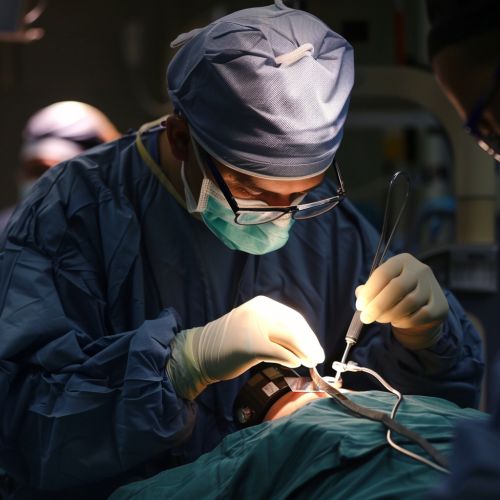Discectomy
Overview
A discectomy is a surgical procedure that involves the removal of damaged or herniated disc material that is pressing on a nerve root or the spinal cord. The procedure is typically performed by a neurosurgeon or an orthopedic surgeon, and it can be done as an open surgery or using minimally invasive techniques.


Indications
Discectomy is primarily indicated for patients suffering from sciatica or radiculopathy, which is pain radiating down the leg due to a herniated disc pressing on a nerve root. Other indications include significant weakness, numbness, or difficulty moving the leg or foot, and loss of bowel or bladder control.
Procedure
The procedure begins with the patient being placed under general anesthesia. The surgeon makes an incision over the affected disc, then moves the muscles away from the spine to expose the vertebrae. Using special instruments, the surgeon removes a portion of the bone and ligament from the spine to better see the herniated disc. The damaged or herniated portion of the disc is then removed, relieving pressure on the nerve root or spinal cord.
Types of Discectomy
There are several types of discectomy procedures, including:
- Open discectomy: This is the traditional form of discectomy, where a large incision is made to access the spine.
- Microdiscectomy: This is a minimally invasive form of discectomy, where a smaller incision is made and a microscope or magnifying lens is used to view the disc and nerves.
- Endoscopic discectomy: In this procedure, a tube with a camera on the end (endoscope) is inserted through a small incision, allowing the surgeon to view the disc and nerves on a monitor.
- Percutaneous discectomy: This is a less invasive procedure where the disc material is removed through a needle inserted into the disc space.
Risks and Complications
As with any surgical procedure, discectomy carries some risks and potential complications. These may include infection, bleeding, nerve or tissue damage, and complications related to anesthesia. There is also a chance that the surgery may not relieve the patient's symptoms, or that they may return in the future.
Recovery and Rehabilitation
Following a discectomy, patients typically stay in the hospital for one to two days. Physical therapy is often recommended to help strengthen the back and prevent future injuries. Most patients can return to normal activities within a few weeks, although heavy lifting and strenuous physical activity may be restricted for several months.
